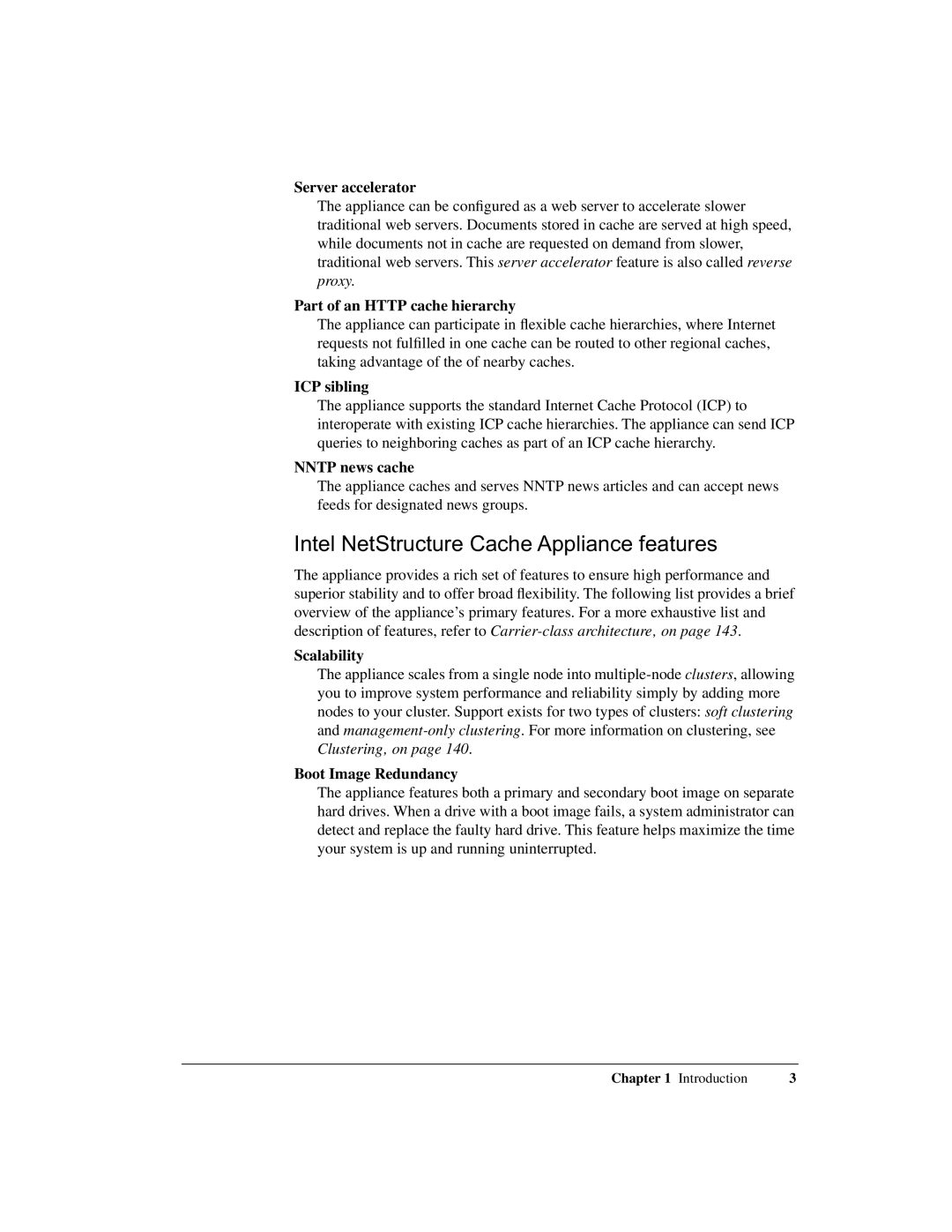Server accelerator
The appliance can be configured as a web server to accelerate slower traditional web servers. Documents stored in cache are served at high speed, while documents not in cache are requested on demand from slower, traditional web servers. This server accelerator feature is also called reverse proxy.
Part of an HTTP cache hierarchy
The appliance can participate in flexible cache hierarchies, where Internet requests not fulfilled in one cache can be routed to other regional caches, taking advantage of the of nearby caches.
ICP sibling
The appliance supports the standard Internet Cache Protocol (ICP) to interoperate with existing ICP cache hierarchies. The appliance can send ICP queries to neighboring caches as part of an ICP cache hierarchy.
NNTP news cache
The appliance caches and serves NNTP news articles and can accept news feeds for designated news groups.
Intel NetStructure Cache Appliance features
The appliance provides a rich set of features to ensure high performance and superior stability and to offer broad flexibility. The following list provides a brief overview of the appliance’s primary features. For a more exhaustive list and description of features, refer to
Scalability
The appliance scales from a single node into
Boot Image Redundancy
The appliance features both a primary and secondary boot image on separate hard drives. When a drive with a boot image fails, a system administrator can detect and replace the faulty hard drive. This feature helps maximize the time your system is up and running uninterrupted.
Chapter 1 Introduction | 3 |
